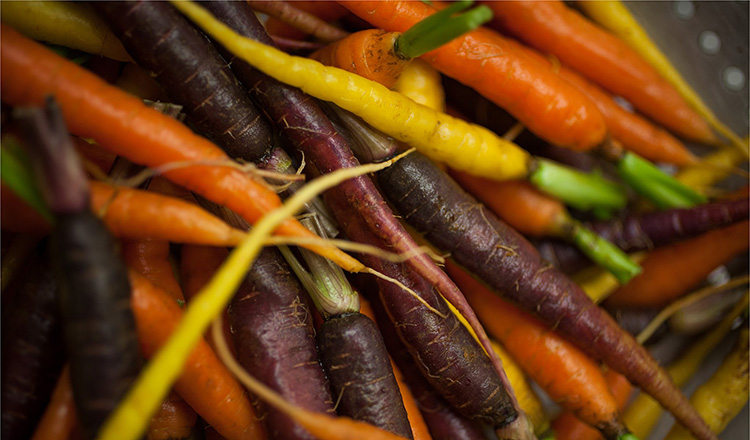
Entertaining guests with special diets is not new, but it certainly seems to be more common. As we all become more health-conscious and aware of what makes us feel good (and bad!), we face lots of ingredient hurdles as we prepare for our holiday meals.
If cooking for special diets feels overwhelming, we have some easy places to start to make sure this year’s holiday meal is less stressful and, most importantly, equally delicious for all of your guests. We’ll discuss some of the more common special diets, like gluten-free and vegan, but you can apply these same ideas when cooking for most needs or allergens.
Often when we have a guest visiting that has special dietary requirements, we think about what else we can make for them. And while adding a dish or two for one particular guest is thoughtful, it creates completely avoidable extra work for you. Rather than add to your menu, think about how you can substitute simple ingredients to modify a recipe you already plan to make.
1. Dairy-Free: If a guest is dairy-free on Thanksgiving, use vegetable oil on your turkey instead of butter (yes, butter is great, but no one will care—and any resulting gravy will also be dairy-free!). Blend soaked and puréed cashews into mashed potatoes to replace the richness of milk or butter, and make an apple crisp with coconut oil instead of a pie. Make sure whatever bread you plan to use in your stuffing is dairy-free. Most breads like sourdough and baguettes are, but some sandwich breads do contain milk.
2. Vegetarian and Vegan: For guests who are vegetarian or vegan, they are accustomed to making a great dinner from an assortment of side dishes, so plan a side that everyone will love that can serve as a heartier option for these guests. A room temperature grain salad with nuts and dried fruit is a filling dish that no one will turn down, vegan or not! Swap out chicken broth for vegetable broth in your stuffing, and, as usual, pass on the butter. Make some extra veggies so that everyone can have their fill, and whenever possible, put garnishes like cheese or crispy bacon in a bowl on the side so guests can choose to add them or not.
3. Gluten-Free: Gluten-free cooking is a little bit more challenging, but there are still some easy ways that you can accommodate your friends. Before you even begin, it’s important to remember that unless your house is fully gluten-free, some guests who are very sensitive to gluten may face the risk of cross contamination (this is true of any very severe allergies, including peanuts and shellfish). Be honest with your guests if you’ve made other recipes containing gluten, especially baking recipes where flour may have been flying in the kitchen. They might prefer to bring a dish that they know will be safe for them to eat. Don’t take it personally.
There are a lot of hidden gluten-containing ingredients, so make sure to check the ingredient list on any prepared products you may be using. For your gravy, if you normally use all-purpose flour to thicken, swap out with a cornstarch or arrowroot slurry instead (be sure to check the label on the starch before you start—a few may contain gluten, though most don’t). You can make a cornbread stuffing with gluten-free cornbread—either homemade or from a special gluten-free mix—and for dessert, rice pudding is already gluten-free, but you can use a gluten-free flour blend to make lots of your favorite recipes like cookies and brownies. And don’t be afraid to take advantage of some convenience items, like prepared gluten-free pie crust.
4. Reduced- or No Sugar: Though we often think of sugar-free eating as a dessert challenge, it is important to remember these guests throughout the whole meal. Items like pre-dinner cocktails and cranberry sauce are more obvious, but often for guests who are watching their sugar intake, other carbohydrates like crackers, stuffing, and potatoes are also off-limits. If you’re serving dips or a cheese plate, consider adding an alternate to crackers or bread, like crisp endive leaves, cucumbers, or bell peppers. For dinner, mashed sweet potatoes are a good alternative to both regular mashed potatoes and candied yams (sweet potatoes have a lower glycemic index than white potatoes), and for dessert, an apple pie with a whole wheat crust and apple filling sweetened with a sugar replacer will hit each guest’s spot.
And don’t forget the little things. You can purchase gluten-free beer or cider, vegan wine, and even dairy-free egg nog (or make it yourself!). Be sure to have soy or almond milk and sugar replacers on hand for after-dinner coffee and plenty of unsweetened iced tea or other sugar-free, non-alcoholic drinks available for guests of all ages. These little touches are simple ways to remind your friends and family that you’re thinking of them.
If you aren’t certain about your guests’ specific needs, don’t be afraid to ask. And if you are concerned that you may not properly accommodate their requirements, tell them that you plan to try your best, but that they might like to bring something along to make sure there is plenty for them to enjoy. After all, though it can feel like a challenge for you, the real challenge is not indulging in your perfectly roasted turkey or whipped cream-topped pumpkin pie.
